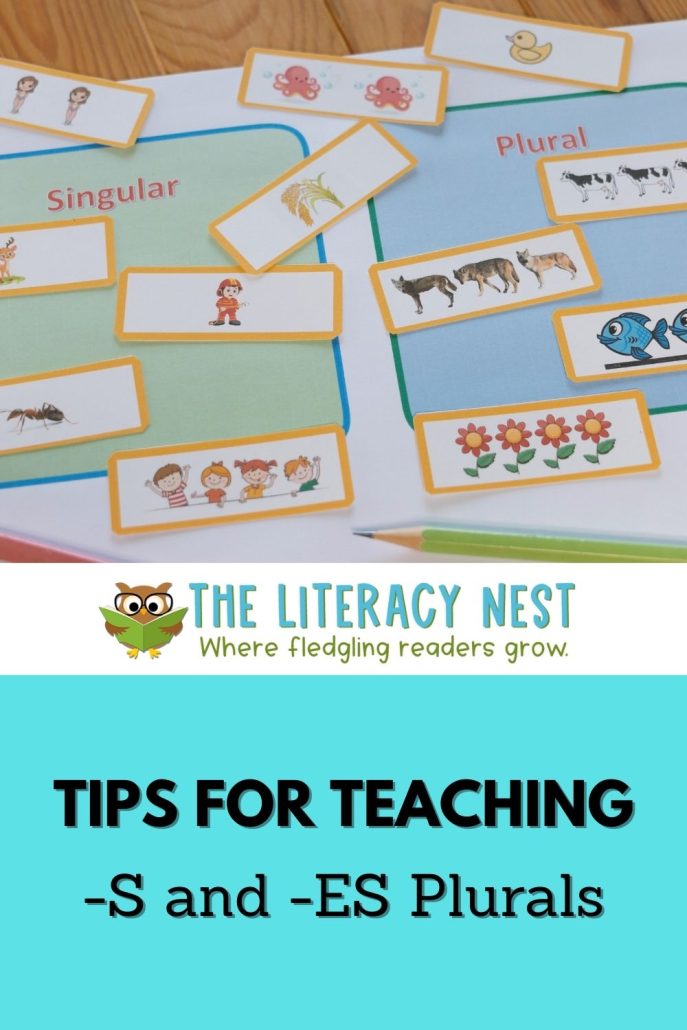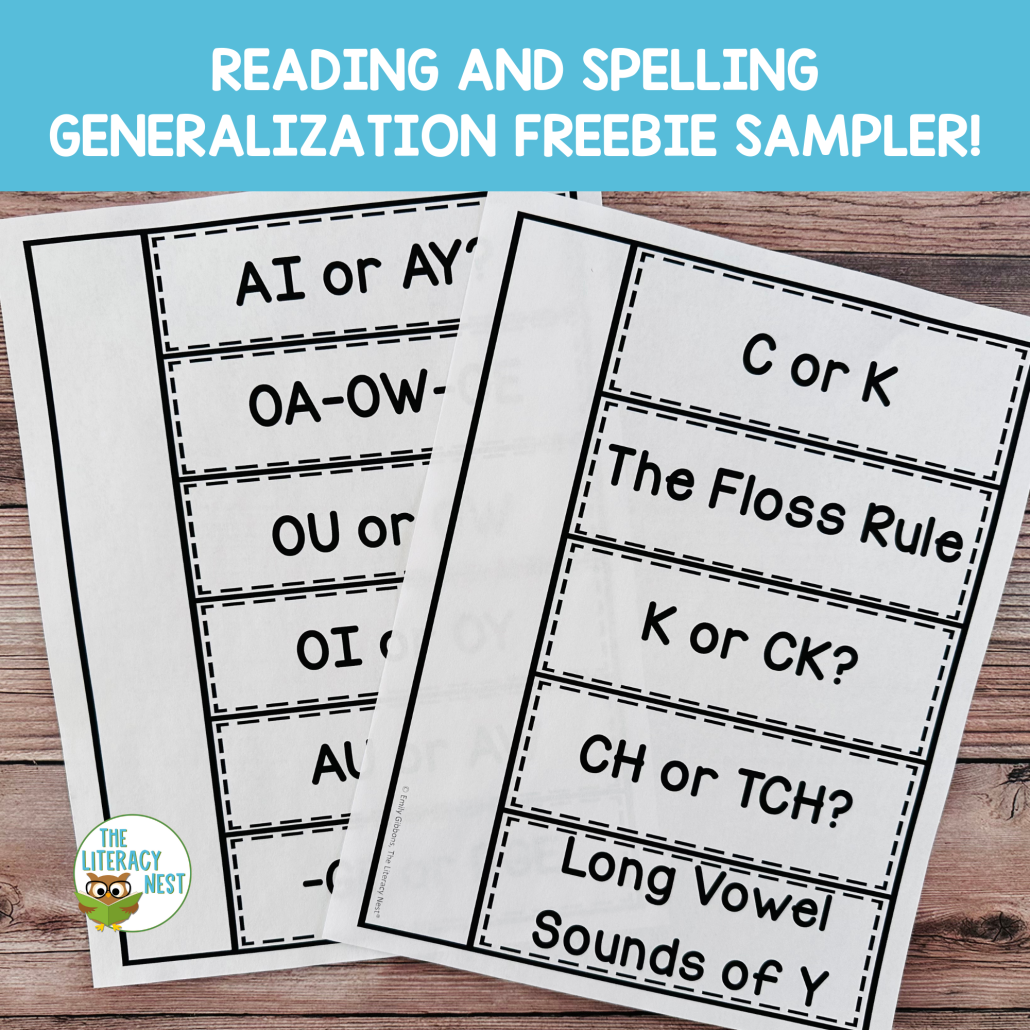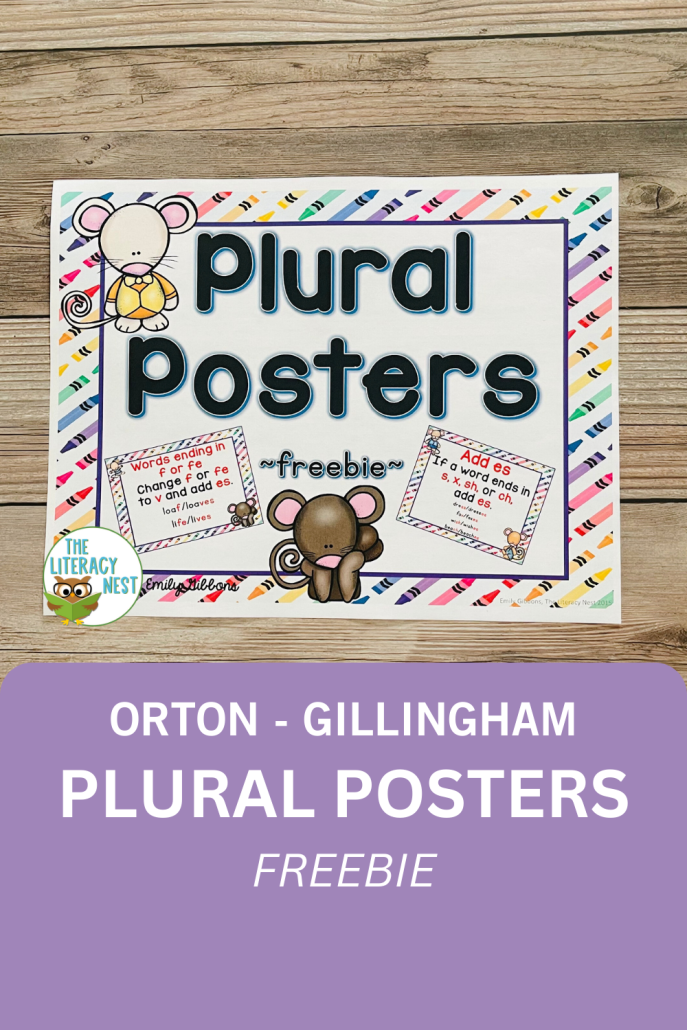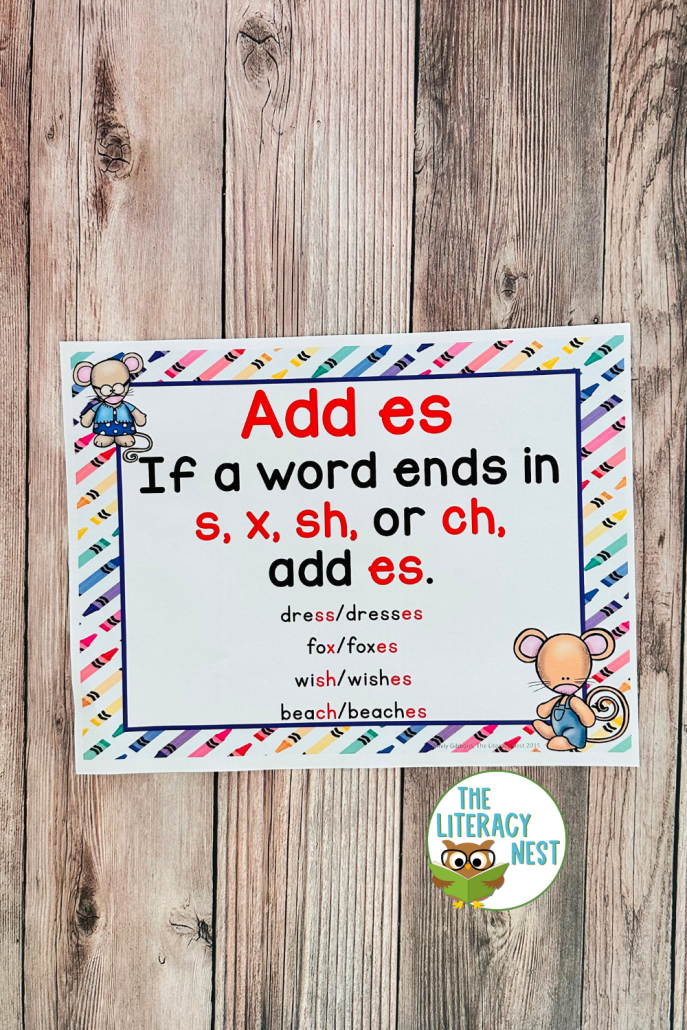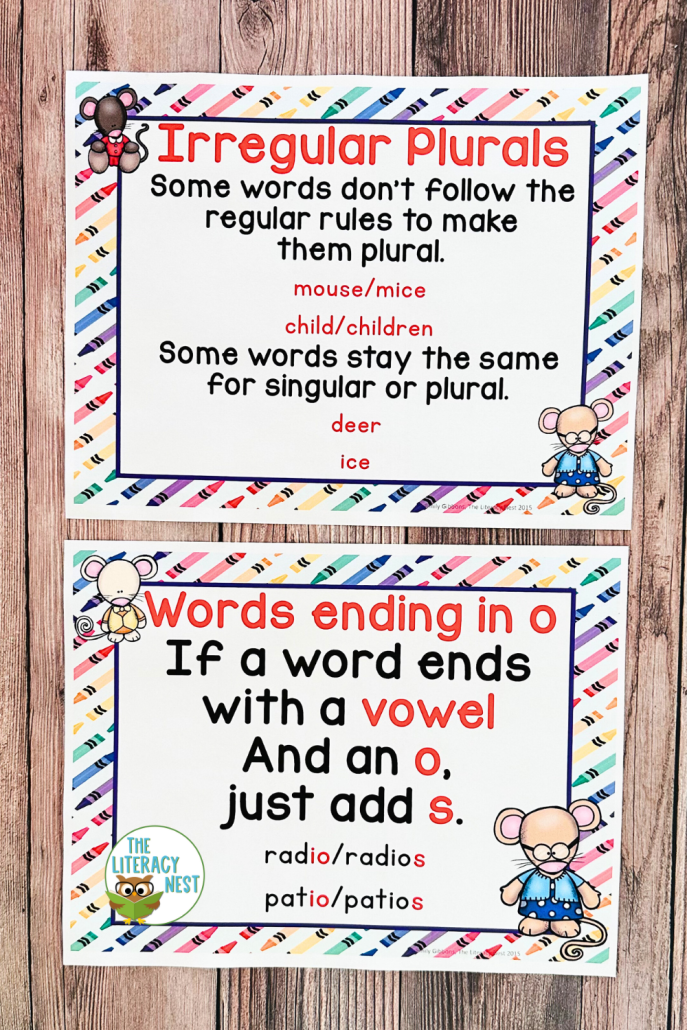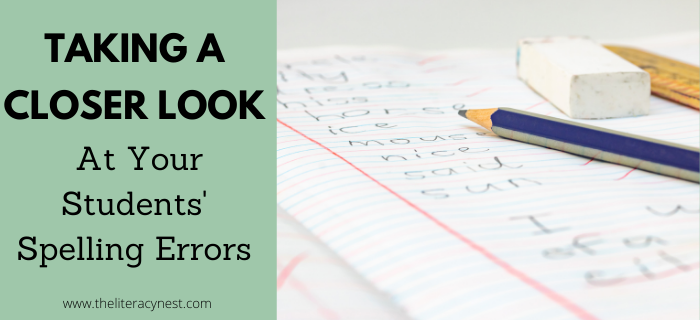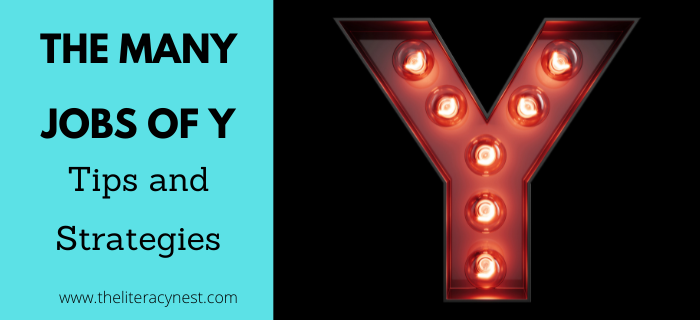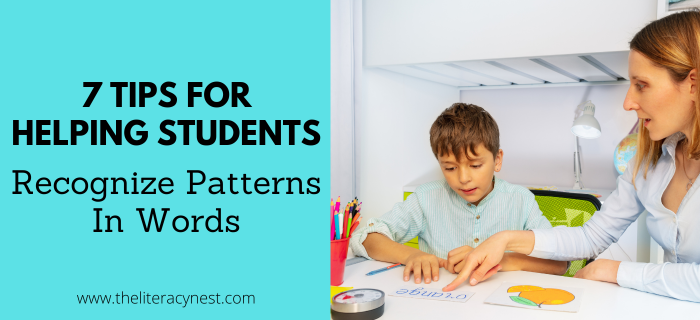Tips for Teaching -S and -ES Plurals
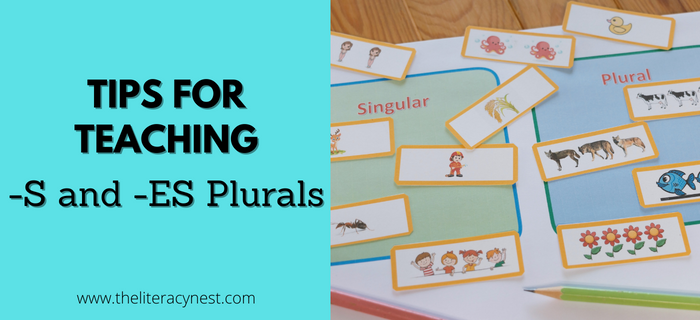
One of the very first suffixes that I teach students is the suffix -s. This suffix makes a word plural. Teaching -s and -es builds on students’ natural speech patterns and makes a perfect introduction to the concept of base words and suffixes. Teaching the concept of plural nouns also creates a bridge to teaching about more advanced concepts such as irregular plurals, subject-verb agreement, and eventually suffixing spelling generalizations. This is really a foundational skill that has a lot of value moving forward. It also opens the doors to reading decodable stories written in more natural-sounding speech.
Download our printable guide to teaching -s and -es.
Prerequisites for Teaching -S and -ES
Typically, I teach the suffix -s first.
Prerequisites for teaching this suffix include:
- Knowing both voiced and unvoiced sounds of S (For more info on teaching voiced and unvoiced S, check out these 7 Teaching Tips!)
- Some familiarity with base words and affixes
In fact, I very often use the introduction of suffix -s to introduce the concept of basewords and suffixes.
The Concept of a Plural
One of the things that can make the suffixes -s and -es tricky, especially with younger children is that in addition to learning the suffix itself, spelling considerations, and the concept of a suffix, these students are also learning about the concept of a plural.
A great way to begin is with tangible objects and oral language. Perhaps create a plural bag and pull different objects from the bag. Using pictures can help to create a wider variety of objects for use with this activity. Sticking with regular plurals only, students can identify a single cat, several dogs, or a group of penguins. It is important to use examples with both the voiced and unvoiced sound of S. Plastic animal toys are well suited to this activity, but common household or classroom objects also work well.
Once students have a secure understanding of what a plural is, understanding the appropriate use of -s is something that comes quite quickly. It is worthwhile to teach the word plural as well as the concept.
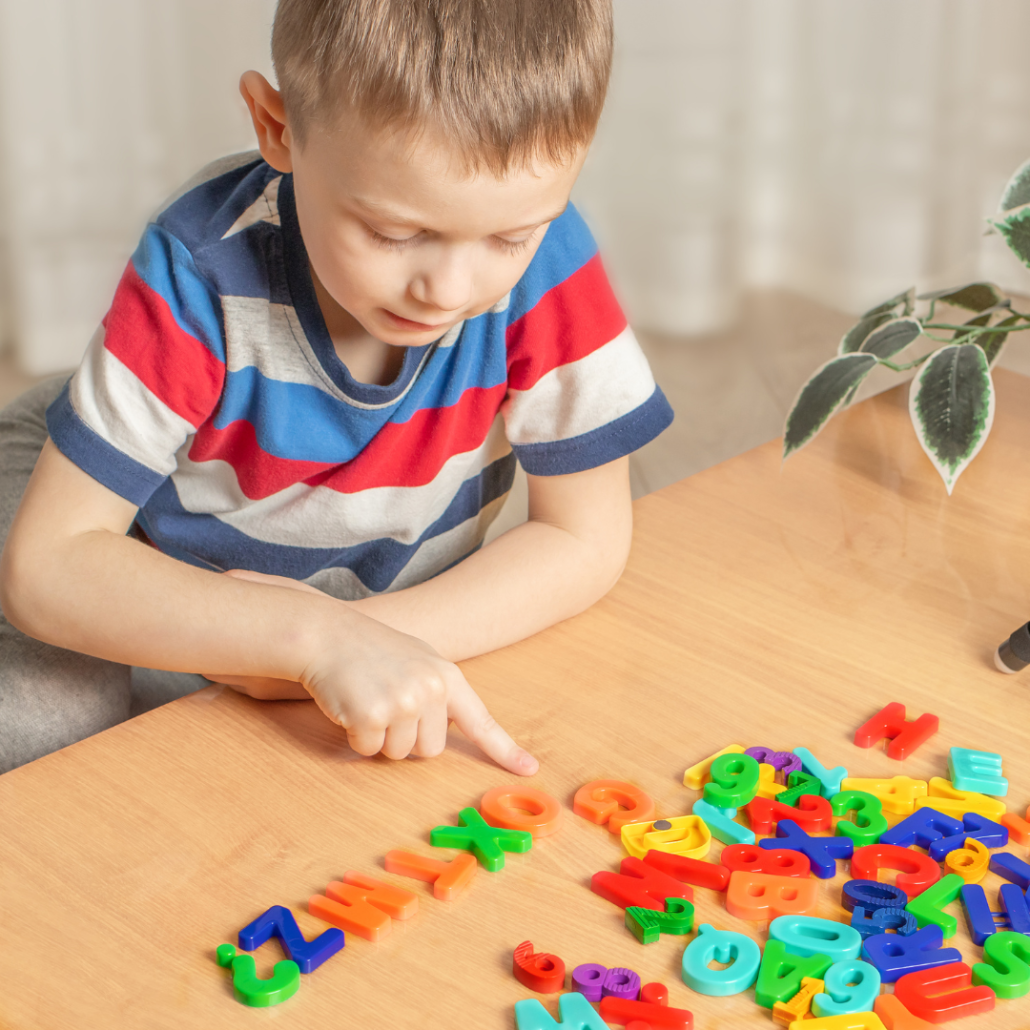
-S at the end of Verbs
While I also introduce that the suffix -s is sometimes found at the end of verbs, it is not necessary to go into excruciating detail about the circumstances under which the suffix -s is used in this way. Explaining to students that the suffix -s is used in the third person singular present tense verbs is unlikely to stick.
It is more powerful and memorable for students to work with examples such as:
- Ted hits the ball.
- Mom sips the pop.
- He rides his bike.
Explaining that we add the -s to make it sound right is usually sufficient at this stage.
Preparing to Teach -ES
When you are ready to add the suffix -es to the mix, there are a few things that you will likely want to review in preparation.
It is helpful if students are very familiar with the concepts of base words and suffixes and that you use that language with them frequently. It also can be helpful to reinforce listening for syllables when writing words.
One way that students can hear the difference between -s and -es in writing is by how many syllables they hear. In most cases, adding -es adds a syllable, while adding -s does not. Because this is true much, but not all, of the time, it is most useful as a problem-solving tool when students are encoding words and struggling with the decision.
Explicit instruction in the use of the suffix -es should include teaching students that there are six endings where the suffix -es is used. It follows S, X, Z, SH, CH, and O.
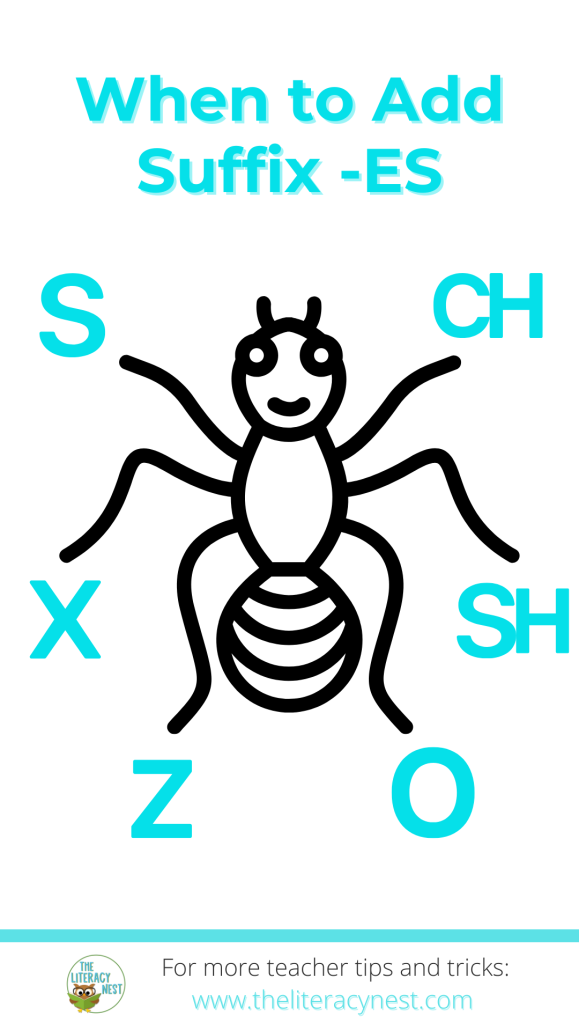
It is worth noting that adding -es to words ending in O is not particularly common and also has exceptions.
For example: go becomes goes, potato becomes potatoes, tomato becomes tomatoes, and veto becomes vetoes.
However: zero becomes zeros, yo-yo becomes yo-yos, radio becomes radios, and photo becomes photos. In fact, there are even times when both spellings are considered correct. Adding -es to words ending in O is also a time when the suffix -es does not add a syllable. However, this can help explain some apparent irregular words with morphological connections such as do and does
Helpful Tips for Teaching -ES
- It can be helpful to use a visual with six parts to represent the six letters that take the suffix -es. For example: five fingers plus one (for sometimes o), or six legs on a bug, or half a dozen cupcakes. Having a visual of this sort supports the students learning and retention and makes the guidelines more memorable.
- If significant time passes between the introduction of the suffix -s and the suffix -es, but especially if they are taught in tandem, it is worthwhile to explicitly teach that any words that do not end in the -es suffix simply add -s to make the plural or the third person singular present tense.
- Irregular plurals such as mouse and mice, goose and geese, man and men are few enough in number that they are best tackled separately and as they make sense in the instructional scope and sequence.
Download our Reading and Spelling Generalizations freebie sampler! It includes mini posters, a note-taker, and a handy cheat sheet with links to blog posts and a video with teaching tips!
Fun Reinforcement Activities for Teaching -S and -ES
Although students rarely have difficulty with their initial understanding of this concept, it nevertheless takes significant practice for them to become proficient with making and spelling words with -s and -es.
- Using reinforcement activities such as games and sorts to help to build mastery.
- Asking students to illustrate sentences or to write appropriate sentences to match illustrations, allows students to use their creativity and reinforce their learning.
- Matching sentences to appropriate pictures or story sequences is a way to combine comprehension, and reading of continuous text, and reinforce the suffixes -s and -es.
Like so many concepts in the study of the English language, the suffixes -s and -es can have many layers. In learning these common and important suffixes, the layers we study must be individualized for our particular students. As students mature, learn more, or are ready to tackle more complex concepts, additional layers of learning are available.
FREE Plurals Poster!
These plurals posters are a great way to practice plurals. Display them when you are teaching the different rules for spelling the plural form.
You can grab it in The Literacy Nest Shop or on TpT.
Are you looking for a list to help teach -s and -es plurals? Word List Builder has got you covered!
Save time searching for -s and -es plurals! Create customized and meaningful review, build your folder of words, create templates and games, and much more in Word List Builder.
